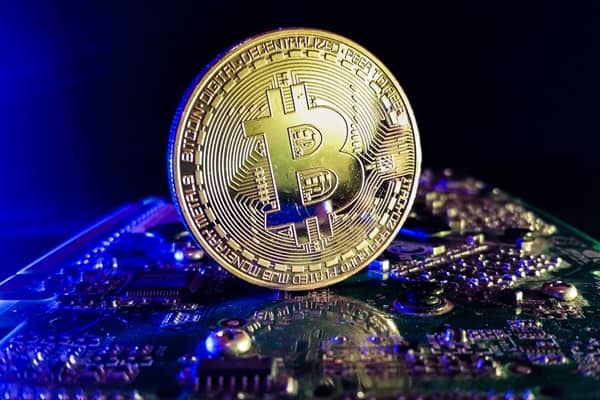Bussiness
How UK economic performance affects the GBP/BTC price

The years 2022-2023 were marked by record-high inflation in the UK. Data shows that people saw Bitcoin as a means to protect their savings from the depreciation of the pound – and the price charts of the leading cryptocurrency justify that.
In 2024, as inflation decreases, the general audience may start seeking more conservative investment tools.
However, discussions about Bitcoin’s hedging function may resume with another rise in pound inflation in the next market cycle.
Inflation in the UK
The sharp rise in inflation in the UK began in 2021 – prices for essential goods started to surge and by 2022 had reached double-digit figures. For example, by June 2023, bread prices had increased by 18% over the previous 12 months, while eggs had risen by 29%.
People’s real wages declined despite an increase in nominal salaries adjusted to inflation. The purchasing power of the pound decreased, and many people found themselves in a challenging financial situation.
Why traditional financial tools did not help cope with inflation
To make ends meet, people started looking for investment vehicles that could help preserve their money. However, the effectiveness of traditional financial instruments proved to be limited.
The British indices FTSE 100 and FTSE 250, representing the combined value of the largest British companies, show a negative annual return. For example, the latter has depreciated by 7% over the past year. Real estate also doesn’t seem like a profitable investment: the annual price change for properties stood at only 3.5% as of April 2023. Even gold, with its 15% yield, can barely improve things when inflation soars to 10%.
Why People Embrace Bitcoin in Tough Times
The ability of Bitcoin to serve as a hedge against inflation has long been up for debate. Some cite data showing that the first cryptocurrency correlates with gold and does not lose value amidst crises. Others point to Bitcoin’s volatility and insufficient historical data – and they are also correct.
The reality is that people do see Bitcoin as a way to protect their funds from depreciation. This was especially evident on September 26, 2022, when the pound plummeted against the dollar by 4.3% in a single day. Trading volume in the BTC/GBP pair that day increased by 1,200%, while the BTC/USD pair remained intact.
The reason why Bitcoin is often likened to gold lies in its scarcity. Both Bitcoin and gold have limited supplies, which can potentially make them store of value assets during times of economic uncertainty. BTC’s supply is capped by 21 million coins – and its emission pace is halved every four years, executing the pre-programmed deflationary mechanism.
In 2023, Bitcoin gained 150% amidst growing inflation in the UK. Skeptics may say that the first cryptocurrency grew due to unrelated reasons, but the folks who pushed the GBP/BTC trading volume definitely got a great deal.
In any case, cryptocurrency investments should be done with special caution. In 2023, the UK Financial Conduct Authority (FCA) warned firms against using the term “inflation-resistant” in relation to cryptocurrencies. Indeed, Bitcoin has no strict anti-correlation with inflation and is more oriented towards long-term growth.
UK interest rates and Bitcoin
When inflation soars, central banks take measures to cool down the economy and tackle currency devaluation. Since December 2021, the Bank of England has raised the key interest rate 14 times, reaching a 15-year high of 5.25%. The same happened in the United States: the Fed rate climbed to 5.25-5.50%, the highest since 2007.
Raising base rates can cause volatility for Bitcoin: people may reduce their exposure to risky assets like cryptocurrencies as borrowing costs mount. The year 2022, marked by synchronized rate hikes in the US and the UK, was a year of prolonged crypto winter and a collapse of the BTC price from $47,600 to $16,600.
On the other hand, the decline in prices can be explained by other reasons. After the bull run of 2021, the market was overheated, and the drop seemed inevitable. In 2022, the depressive sentiment intensified with the collapse of several major cryptocurrencies and industry players. In 2023, the market resumed its growth in anticipation of the Bitcoin halving and BTC ETF approval.
The cryptocurrency market has its own dynamics, and while macroeconomic factors greatly influence it, their impact is limited.
2024 and beyond: What to expect?
Currently, the BoE interest rate remains high, and inflation is gradually beginning to decline. People’s need for safe-haven assets persists but is no longer as urgent.
Experts anticipate a rate cut in the following months. It’s too early to judge when exactly it will happen, but a repetition of the cycle can be speculated. With rate cuts, the economy will start to pick up, gradually fueling inflation – and discussions about what can serve as a hedge against pound devaluation will become relevant again.
As rate cut discussions gain momentum, the potential GBP/BTC price dynamic will remain a focal point for investors. A rate cut could weaken the pound, leading investors to seek alternative stores of value like Bitcoin. This increased demand could drive up the price of Bitcoin relative to GBP. However, the extent of this relationship will depend on various factors, including market sentiment, regulatory developments, and the overall economic outlook.










